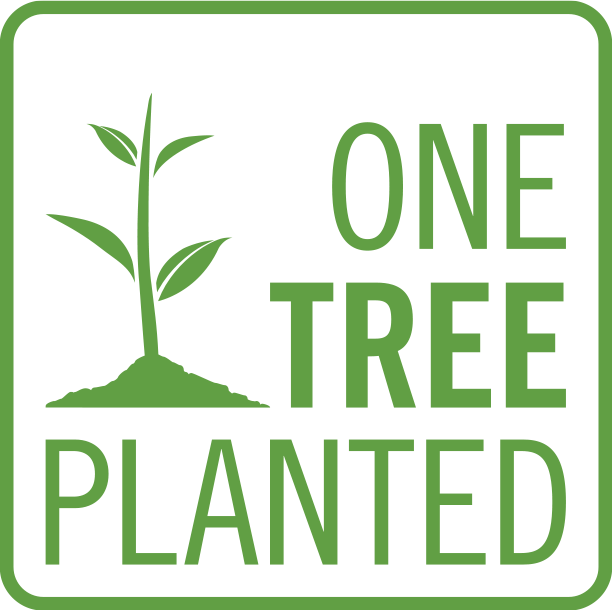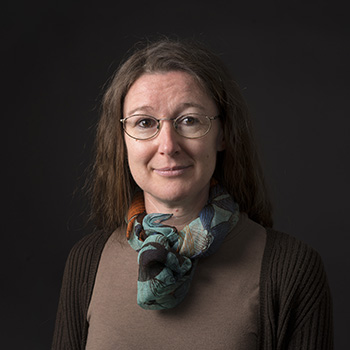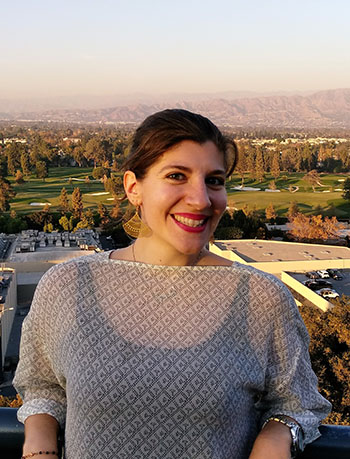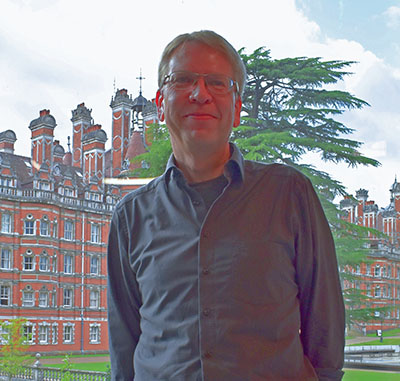Shaping Cultural Landscapes
Connecting Agriculture, Crafts, Construction, Transport, and Resilience Strategies
Edited by Ann Brysbaert, Irene Vikatou & Jari Pakkanen | 2022

Shaping Cultural Landscapes
Connecting Agriculture, Crafts, Construction, Transport, and Resilience Strategies
Edited by Ann Brysbaert, Irene Vikatou & Jari Pakkanen | 2022
Paperback ISBN: 9789464260953 | Hardback ISBN: 9789464260960 | Imprint: Sidestone Press | Format: 210x280mm | 298 pp. | Language: English | 78 illus. (bw) | 65 illus. (fc) | Keywords: Cultural landscapes; labour cost studies; resilience strategies; human-environment interaction; towns and hinterlands; funerary landscapes; islandscapes; productive landscapes; cross-craft approaches; carrying capacity; community work | download cover
Read online or downloaded 1710 times
-
Digital & Online access
This is a full Open Access publication, click below to buy in print, browse, or download for free.
-
Buy via Sidestone (EU & UK)
-
Buy via our Distributors (WORLD)
For non-EU or UK destinations you can buy our books via our international distributors. Although prices may vary this will ensure speedy delivery and reduction in shipping costs or import tax. But you can also order with us directly via the module above.
UK international distributor
USA international distributor
-
Bookinfo
Paperback ISBN: 9789464260953 | Hardback ISBN: 9789464260960 | Imprint: Sidestone Press | Format: 210x280mm | 298 pp. | Language: English | 78 illus. (bw) | 65 illus. (fc) | Keywords: Cultural landscapes; labour cost studies; resilience strategies; human-environment interaction; towns and hinterlands; funerary landscapes; islandscapes; productive landscapes; cross-craft approaches; carrying capacity; community work | download cover
Read online or downloaded 1710 times

We will plant a tree for each order containing a paperback or hardback book via OneTreePlanted.org.
Any activity requires the expenditure of energy, and the larger the scale of the undertakings, the more careful and strategic planning in advance is required. In focusing on labouring by humans and other animals, the papers in this volume investigate through a wide range of contexts how past people achieved their multiple daily tasks while remaining resilient in anticipation of adverse events and periods.
Each paper investigates the resource requirements of combined activities, from conducting agriculture or trade, over many different crafts, constructing houses and monumental buildings, and how the available resources were employed successfully. Multilayered data sets are employed to illuminate the many interconnected networks of humans and resources that impacted on people’s day-to-day activities, but also to discuss the economic, cultural and socio-political relationships over time in different regions.
Each of us aimed to discuss novel perspectives in which the landscape in its widest sense is connected to interdisciplinary architectural and/or crafting perspectives. Rural landscapes and their populace formed the backbone of pre-industrial societies. Analyses of the rural ‘hinterland’, the foci of cities and other central places (often with monumental architecture) and the communication between these are essential for the papers of this volume. These different agents and phenomena and their connections are crucial to our understanding how political units functioned at several socially interconnected levels.
Bottom-up approaches can dissolve “monolithic” understandings of societies, the elite-labour/farmer and the centre/rural dichotomies, because the many social groups co-depended on each other, albeit perhaps in unequal measure depending on the given context.
Shaping Cultural Landscapes through Crafts, Construction, Infrastructure, Agriculture and Resilience Strategies Introduction to the papers
Ann Brysbaert, Jari Pakkanen and Irene Vikatou
The Life of the Marble Mountain: Agency and Ecology in the Marble Quarries of Ancient Tegea, Greece
Jørgen Bakke
Building the tholos tomb in Tiryns, Greece: comparative labour costs and field methods
Ann Brysbaert, Daniel Turner and Irene Vikatou
Mobility as a drive to shape cultural landscapes: prehistoric route-use in the Argolid and surroundings, Greece
Ann Brysbaert and Irene Vikatou
Tracing the Mycenaean hinterlands. Refining the models of Mycenaean territoriality with insights from the cadastral maps of the Second Venetian Rule in the Peloponnese, Greece
Kalliopi Efkleidou
Climate, carrying capacity and society: the quest for universal truths
Paul Erdkamp
Encompassing islandscapes in southern Vanuatu
James L. Flexner, Stuart Bedford and Frederique Valentin
After the Preclassic Collapse. A socio-environmental contextualization of the rise of Naachtun, Guatemala
Julien Hiquet, Cyril Castanet, Lydie Dussol, Philippe Nondédéo, Marc Testé, Louise Purdue, Noémie Tomadini, Sandrine Grouard and Antoine Dorison
Placing the houses of the dead: the spatial setting of Mycenaean necropoleis in the Argive Plain, Greece
Stefan Müller
Marble in the mountains – econometrics of quarrying and transporting building stones for the temple of Athena Alea at Tegea, Greece
Jari Pakkanen
Shaping a Mycenaean cultural landscape at Kalamianos, Greece
Daniel Pullen
Time spent at the Heuneburg, Germany, between 600 and 540 BCE to build all their constructions
François Remise
The agricultural hinterland of Aquincum and Brigetio, Hungary. Landscape, rural settlements, towns and their interactions
Bence Simon
Classical and Hellenistic pottery kilns from Greek rural areas in their natural and human landscape
Francesca Tomei
Towns in a sea of nomads: territory and trade in Central Somaliland during the Medieval period
Jorge de Torres Rodríguez, Alfredo González-Ruibal, Manuel Antonio Franco Fernández, Candela Martínez Barrio and Pablo Gutiérrez de León Juberías
A cross-craft approach to ceramic, glass and iron in the Early Middle Ages. The resources of workshops from southern Belgium
Line Van Wersch, Martine van Haperen and Gaspard Pagès
Did ancient building contractors work for free? Stone supply in fourth-century BCE Epidauros, Greece
Jean Vanden Broeck-Parant

Prof. dr. Ann Brysbaert
Ann Brysbaert is Professor in Ancient Technologies, Materials and Crafts at the Faculty of Archaeology, Leiden University (NL), and since 1/3/2022 also the Director of the Netherlands Institute in Athens (NIA). She is Principal Investigator of the SETinSTONE project (ERC-CoG, grant nbr 646667) held at Leiden University. Previously, she held permanent and senior research positions at the Universities of Leicester, Glasgow, Heidelberg and Leiden. In 2014, she was Professeur Invitée at Bordeaux Montaigne University.

Irene Vikatou M.Sc.
Irene Vikatou started her PhD at Leiden University (NL) on the topic of ancient Greek road networks in the Greek region, during pre-Roman and Roman times. The purpose of this research is to assess the extent to which Greek roads served as predecessors to the Roman ones. She studied Biology at the University of Athens and completed an M.Sc. in Osteoarchaeology and Funerary Archaeology at Leiden University in 2013. In this programme, she specialized in the analysis of human skeletal remains from archaeological excavations, focusing on pathological lesions caused by external factors, such as trauma and strenuous physical activity.

Prof. dr. Jari Pakkanen
Jari Pakkanen is Professor of Greek Archaeology at Royal Holloway, University of London. He was the Director of the Finnish Institute at Athens in 2013–2017 and he has directed and co-directed several archaeological projects in the Greece and Sicily which have concentrated on the built environment.
Abstract:
Any activity requires the expenditure of energy, and the larger the scale of the undertakings, the more careful and strategic planning in advance is required. In focusing on labouring by humans and other animals, the papers in this volume investigate through a wide range of contexts how past people achieved their multiple daily tasks while remaining resilient in anticipation of adverse events and periods.
Each paper investigates the resource requirements of combined activities, from conducting agriculture or trade, over many different crafts, constructing houses and monumental buildings, and how the available resources were employed successfully. Multilayered data sets are employed to illuminate the many interconnected networks of humans and resources that impacted on people’s day-to-day activities, but also to discuss the economic, cultural and socio-political relationships over time in different regions.
Each of us aimed to discuss novel perspectives in which the landscape in its widest sense is connected to interdisciplinary architectural and/or crafting perspectives. Rural landscapes and their populace formed the backbone of pre-industrial societies. Analyses of the rural ‘hinterland’, the foci of cities and other central places (often with monumental architecture) and the communication between these are essential for the papers of this volume. These different agents and phenomena and their connections are crucial to our understanding how political units functioned at several socially interconnected levels.
Bottom-up approaches can dissolve “monolithic” understandings of societies, the elite-labour/farmer and the centre/rural dichotomies, because the many social groups co-depended on each other, albeit perhaps in unequal measure depending on the given context.
Contents
Shaping Cultural Landscapes through Crafts, Construction, Infrastructure, Agriculture and Resilience Strategies Introduction to the papers
Ann Brysbaert, Jari Pakkanen and Irene Vikatou
The Life of the Marble Mountain: Agency and Ecology in the Marble Quarries of Ancient Tegea, Greece
Jørgen Bakke
Building the tholos tomb in Tiryns, Greece: comparative labour costs and field methods
Ann Brysbaert, Daniel Turner and Irene Vikatou
Mobility as a drive to shape cultural landscapes: prehistoric route-use in the Argolid and surroundings, Greece
Ann Brysbaert and Irene Vikatou
Tracing the Mycenaean hinterlands. Refining the models of Mycenaean territoriality with insights from the cadastral maps of the Second Venetian Rule in the Peloponnese, Greece
Kalliopi Efkleidou
Climate, carrying capacity and society: the quest for universal truths
Paul Erdkamp
Encompassing islandscapes in southern Vanuatu
James L. Flexner, Stuart Bedford and Frederique Valentin
After the Preclassic Collapse. A socio-environmental contextualization of the rise of Naachtun, Guatemala
Julien Hiquet, Cyril Castanet, Lydie Dussol, Philippe Nondédéo, Marc Testé, Louise Purdue, Noémie Tomadini, Sandrine Grouard and Antoine Dorison
Placing the houses of the dead: the spatial setting of Mycenaean necropoleis in the Argive Plain, Greece
Stefan Müller
Marble in the mountains – econometrics of quarrying and transporting building stones for the temple of Athena Alea at Tegea, Greece
Jari Pakkanen
Shaping a Mycenaean cultural landscape at Kalamianos, Greece
Daniel Pullen
Time spent at the Heuneburg, Germany, between 600 and 540 BCE to build all their constructions
François Remise
The agricultural hinterland of Aquincum and Brigetio, Hungary. Landscape, rural settlements, towns and their interactions
Bence Simon
Classical and Hellenistic pottery kilns from Greek rural areas in their natural and human landscape
Francesca Tomei
Towns in a sea of nomads: territory and trade in Central Somaliland during the Medieval period
Jorge de Torres Rodríguez, Alfredo González-Ruibal, Manuel Antonio Franco Fernández, Candela Martínez Barrio and Pablo Gutiérrez de León Juberías
A cross-craft approach to ceramic, glass and iron in the Early Middle Ages. The resources of workshops from southern Belgium
Line Van Wersch, Martine van Haperen and Gaspard Pagès
Did ancient building contractors work for free? Stone supply in fourth-century BCE Epidauros, Greece
Jean Vanden Broeck-Parant

Prof. dr. Ann Brysbaert
Ann Brysbaert is Professor in Ancient Technologies, Materials and Crafts at the Faculty of Archaeology, Leiden University (NL), and since 1/3/2022 also the Director of the Netherlands Institute in Athens (NIA). She is Principal Investigator of the SETinSTONE project (ERC-CoG, grant nbr 646667) held at Leiden University. Previously, she held permanent and senior research positions at the Universities of Leicester, Glasgow, Heidelberg and Leiden. In 2014, she was Professeur Invitée at Bordeaux Montaigne University.

Irene Vikatou M.Sc.
Irene Vikatou started her PhD at Leiden University (NL) on the topic of ancient Greek road networks in the Greek region, during pre-Roman and Roman times. The purpose of this research is to assess the extent to which Greek roads served as predecessors to the Roman ones. She studied Biology at the University of Athens and completed an M.Sc. in Osteoarchaeology and Funerary Archaeology at Leiden University in 2013. In this programme, she specialized in the analysis of human skeletal remains from archaeological excavations, focusing on pathological lesions caused by external factors, such as trauma and strenuous physical activity.

Prof. dr. Jari Pakkanen
Jari Pakkanen is Professor of Greek Archaeology at Royal Holloway, University of London. He was the Director of the Finnish Institute at Athens in 2013–2017 and he has directed and co-directed several archaeological projects in the Greece and Sicily which have concentrated on the built environment.
-
Digital & Online access
This is a full Open Access publication, click below to buy in print, browse, or download for free.
-
Buy via Sidestone (EU & UK)
-
Buy via our Distributors (WORLD)
For non-EU or UK destinations you can buy our books via our international distributors. Although prices may vary this will ensure speedy delivery and reduction in shipping costs or import tax. But you can also order with us directly via the module above.
UK international distributor
USA international distributor
- Browse all books by subject
-
Search all books

We will plant a tree for each order containing a paperback or hardback book via OneTreePlanted.org.
You might also like:
© 2025 Sidestone Press KvK nr. 28114891 Privacy policy Sidestone Newsletter Terms and Conditions (Dutch)








